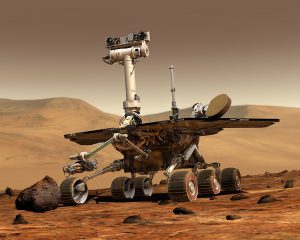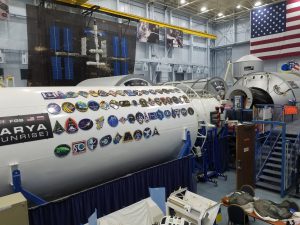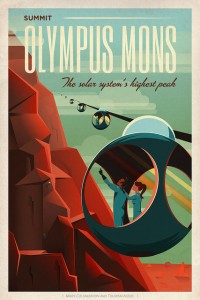Just a quick post here that our paper just came out, “Draft Genome Sequences of Bacillus glennii V44-8, Bacillus saganii V47-23a, Bacillus sp. Strain V59.32b, Bacillus sp. Strain MER_TA_151, and Paenibacillus sp. Strain MER_111, Isolated from Cleanrooms Where the Viking and Mars Exploration Rover Spacecraft Were Assembled“. This describes the genomes of a couple new …
I’m a sucker for space microbiome research, I admit. Here’s a great sounding postdoc opportunity with our collaborator Parag Vaishampayan at JPL. Job Details Job ID: 11208 We ask the biggest questions, then search the universe for answers—literally. And, with great opportunities come great responsibilities! In the Biotechnology and Planetary Protection group at JPL, we …
This is a meeting report from the 2019 “3rd COSPAR Meeting to Address Planetary Protection Knowledge Gaps for Human Missions and Working Meeting on Microbial and Human Health Monitoring”. As much as NASA loves acronyms, I can see why no one liked the idea of the “COSPAR-MAPPKGHMWMMHHM 2019” name. Speaking of acronyms… COSPAR stand for …
Much discussed among microbiogists have been various scenes from the book and film (both excellent), “The Martian”. In short, the protagonist mixes some earth soil, some human feces, and some Martian soil to grow potatoes on Mars. Would this work? Is the feces required? Would you get sick? Are the microbes even needed for plant …
According to a recent BBC news article, NASA is doing a Mars simulation project to see if six live human beings can survive being isolated in a dome together. From a MoBE perspective, it would be cool to study this system. It’s completely closed to outside microbes – the people living in this dome have to …
reposted from jennomics.com http://www.nasa.gov/ames/events/ppw2015workshop/#.VRMLLJPF8mU I’m at a NASA Ames workshop this week. The goal is to have a discussion about planetary protection with respect to human spaceflight, in particular to Mars, mostly during a “sample and return” mission and a little bit about human habitation on Mars. I’m tweeting with #planetaryprotection. There’s also live streaming here: …
IBM and Mars put out a joint press release today announcing a new effort to use metagenomics to study microorganisms in the food supply chain. The new initiative, called the Sequencing the Food Supply Chain Consortium (SFSC), will use metagenomics and metatranscriptomics to establish what they call a “microbial baseline” that can later be used …
For many years I have been worried about how space travel will affect microbiomes – of the space vehicles and of the residents (people, other animals, plants, etc). This is one of the reasons we started Project MERCCURI and get involved in looking at the microbes on the International Space Station. It is also why …
Just pointed to this story: Microbial stowaways to Mars identified : Nature News & Comment by Darlene Cavalier, our collaborator on the “Space Microbes” Project MERCCURI. The article reports on a presentation by Stephanie Smith at the ASM 2014 meeting going on in Boston. Smith presented results from characterizing (via culturing) the microbes present on various parts …
Here’s a case where just the title of an article is awesome: “Pyrosequencing-Derived Bacterial, Archaeal, and Fungal Diversity of Spacecraft Hardware Destined for Mars”. Sadly it’s not open access but the abstract is worth a read at a minimum. The authors conducted environmental surveys in cleanrooms and of equipment destined for Mars. Basically they found that …



